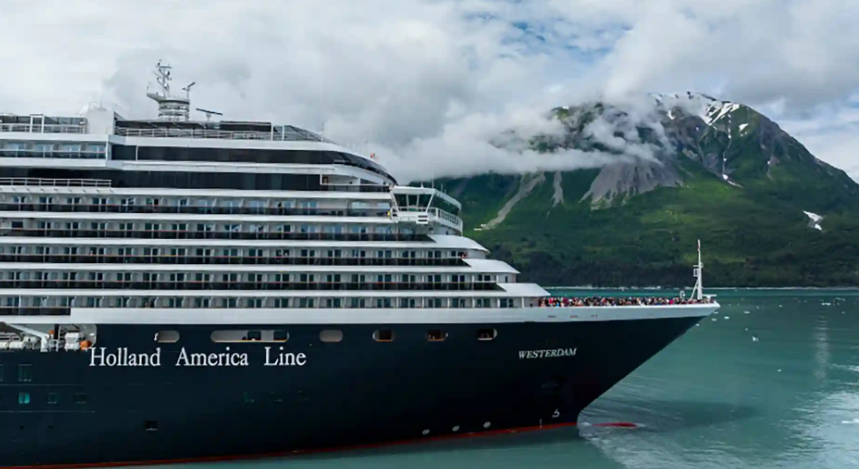

Holland America Line has launched a pilot project aimed at reprocessing aluminium cruise ship furniture, focusing on overcoming the challenges of disassembly as part of its broader commitment to promoting circularity in marine design. The initiative seeks to identify smelters specialising in melting down and repurposing this waste metal, which is classified as a critical raw material. Given its high economic value and potential supply risks in regions such as the US and Europe, the project underscores the importance of securing sustainable aluminium sources.
 Image Source: Holland America Line
Image Source: Holland America Line
“We are heavily focused on what we do with our outdoor aluminium furniture. Cruise ships have tonnes of aluminium because it is one of the most durable products you can have when it is exposed to salt water, and people want to lounge on balconies or outdoor pool decks, and a lot of those frames are made from aluminium,” stated My Nguyen, Director of Interior Design at Holland America Line and Seabourn.
Sustainable furniture design
A passionate advocate for the industry, My Nguyen also highlighted how the latest pilot project is focusing on reprocessing outdoor furniture as part of their ongoing efforts to drive sustainability and circularity in ship design. Ms Nguyen emphasised the importance of interior designers engaging in conversations with vendors to develop products that can be easily and quickly disassembled at the end of their lifecycle.
The key is designing with disassembly in mind, ensuring it does not disrupt efficient ship operations. Additionally, shipping furniture in consolidated parts not only reduces the shipping footprint but also increases the number of potential partners who can take back and repurpose the aluminium.
“We know we have thousands of pieces of aluminium furniture that will need to be replaced. We have already ordered the replacements, but what are we going to do with the old furniture if it cannot be donated? The goal is to create an ecosystem of partners. This involves companies to take the aluminium in its end-of-life state, and vendors that buy this aluminium to create furniture that goes back on our ships. The brands can make a business case to be cost favourable since they have a desired commodity; the aluminium can be purchased by vendors to create more furniture to put back on the ships; and nothing goes into landfill,” added My Nguyen.
While Ms. Nguyen expresses being "100 per cent hopeful and optimistic" that a solution will be found, she acknowledges that it is not a straightforward process. She views the pilot project as having two parallel paths, with the first being the recognition that cruise lines possess products that retain value even at the end of their lifecycle.
Responses








